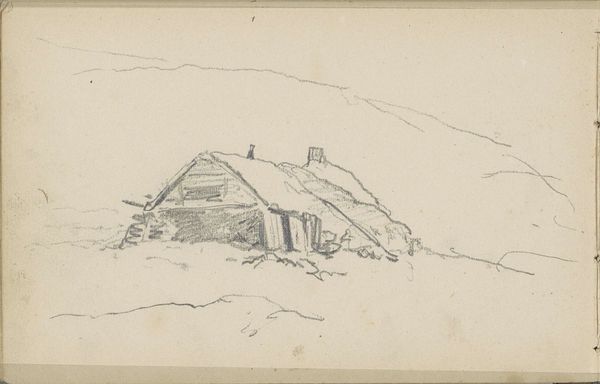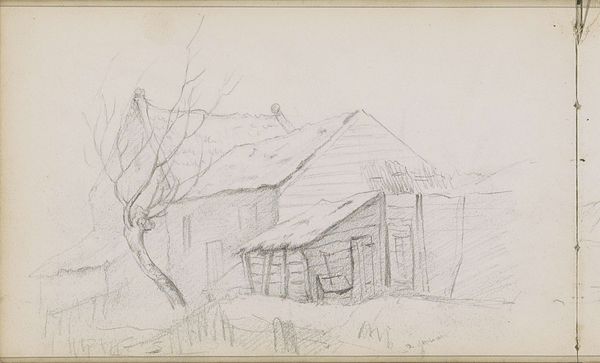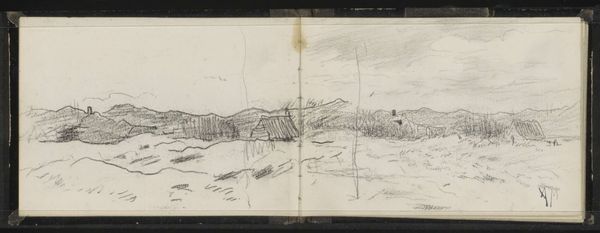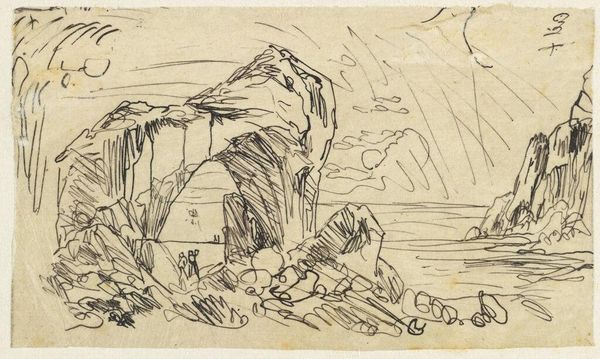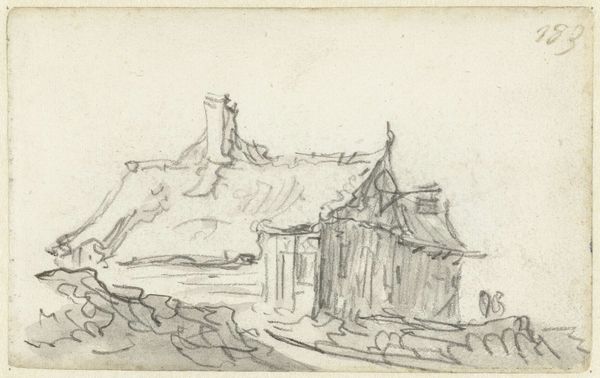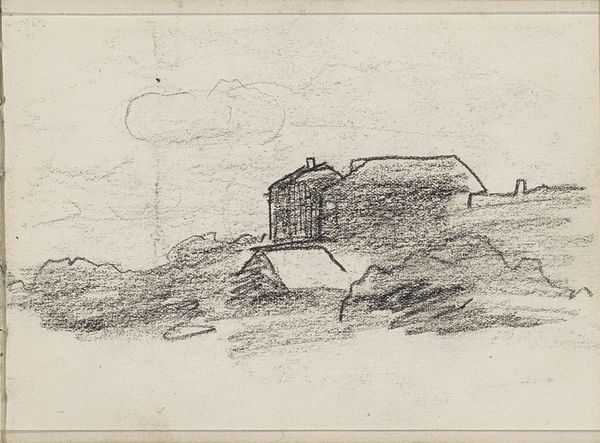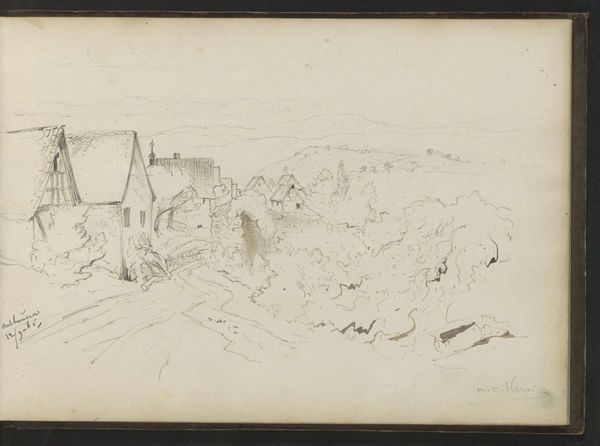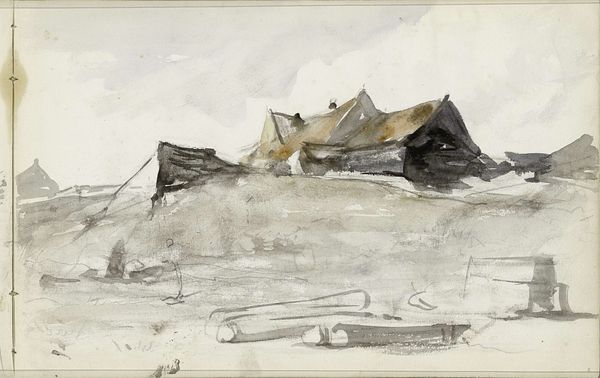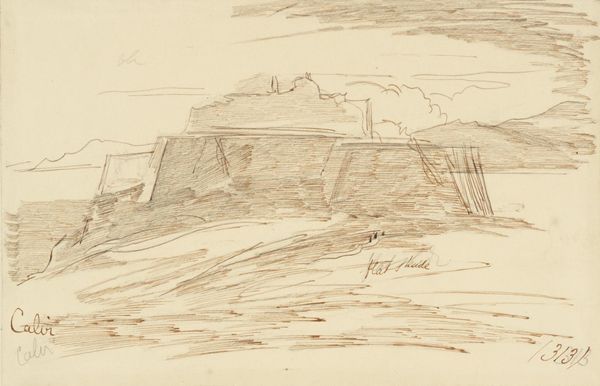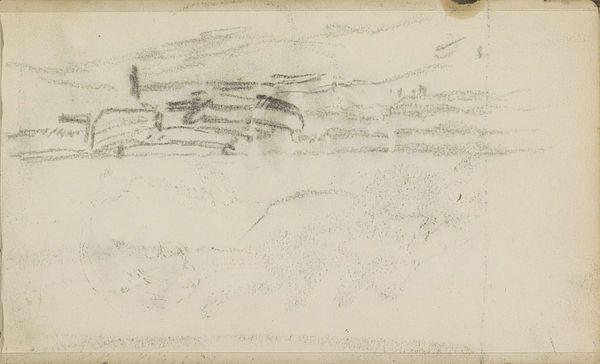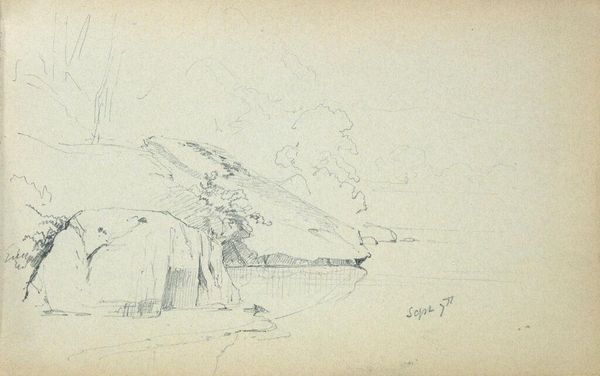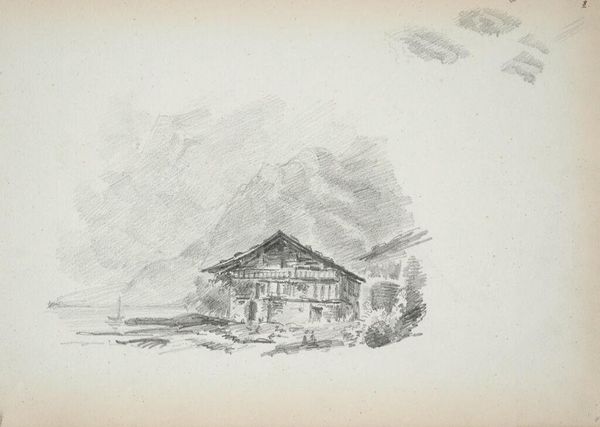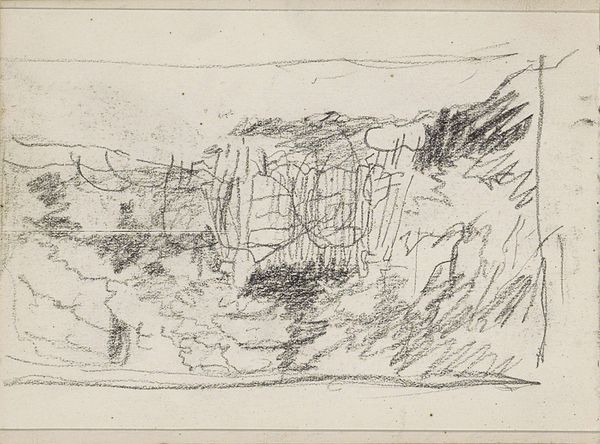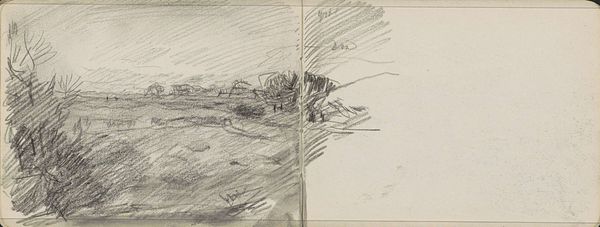
drawing, pencil
#
drawing
#
pencil sketch
#
landscape
#
pencil
#
realism
Copyright: Rijks Museum: Open Domain
Editor: This is "Plaggenhut" by Maria Vos, likely created sometime between 1834 and 1906. It’s a pencil drawing, currently held at the Rijksmuseum. I'm struck by how raw and immediate it feels, despite the delicate medium. What stands out to you? Curator: What interests me most is how Vos engages with the everyday materiality of rural life. Consider the very process – a readily available pencil and paper used to depict a humble dwelling. It bypasses traditional hierarchies of subject matter, doesn't it? How does the artist’s choice of pencil, and the repetitive action of sketching, influence our understanding of labour, both artistic and manual, inherent in constructing this "Plaggenhut"? Editor: That's a good point; it definitely highlights the value in everyday labour. I hadn't considered how the medium itself speaks to that. So, by focusing on this common dwelling, is Vos also making a commentary on consumption and the basic human need for shelter? Curator: Precisely. This isn’t about grand estates or idealised landscapes. It's about the bare essentials of existence. The rough, sketchy lines actually emphasize the fragility and impermanence of such a structure. Does it suggest something about the lived experiences of the people who likely built and occupied this home, its reliance on local materials? Editor: It definitely gives a sense of their daily lives and perhaps the difficult circumstances. I now appreciate how her choice of subject, combined with the simple tools she used, provides such a powerful commentary. Curator: Indeed. Vos elevates the ordinary, using the simple materials at hand, offering us a glimpse into a specific place and time shaped by the hard realities of labor and material limitations. Editor: I hadn’t thought about art this way before, it opens up a new way to interpret beyond the image.
Comments
No comments
Be the first to comment and join the conversation on the ultimate creative platform.
